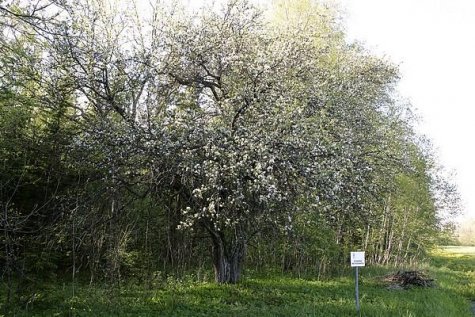Crab apple is tree of the year
Photo: Arne Ader
Translation: Liis
The Õitsemäe crab apple tree
Crab apple tree Mets-õunapuu Malus sylvestris
There are many native crab apple trees on Saaremaa. Near Ansi village is a forest where they are the dominating tree species along with oak and birch. Elsewhere the crab apple grows as a solitary tree or a shrub. In shady locations and on the coast the crab apples are finishing their flowering.
The crab apple can easily be confused with domesticated apples gone wild that have grown from seeds of domesticated apples – many more such trees grow in nature than proper crab apples that need fertile soil and much light.
The special traits of the crab apple can be easily remembered on comparison with the domesticated apple tree. Flowers and shoots are quite similar for all apple trees. It is simplest to identify them from the leaves: the leaves of the crab apple are glossy on the upper side and the tip of the leaf turns downwards. The undersides of the leaves are always "hairy“ on the domesticated apple tree, "naked“ on the crab apple. A domesticated apple gone wild has the characteristics of the domesticated apple tree but does not carry on the "garden“ properties of the mother tree. Looking at the trunk of a crab apple, the bark on younger trees is greyish-brown, and the older the tree, the rougher and more fissured is the bark. The crown is dense and the tips of dried shoots sharp as thorns.









